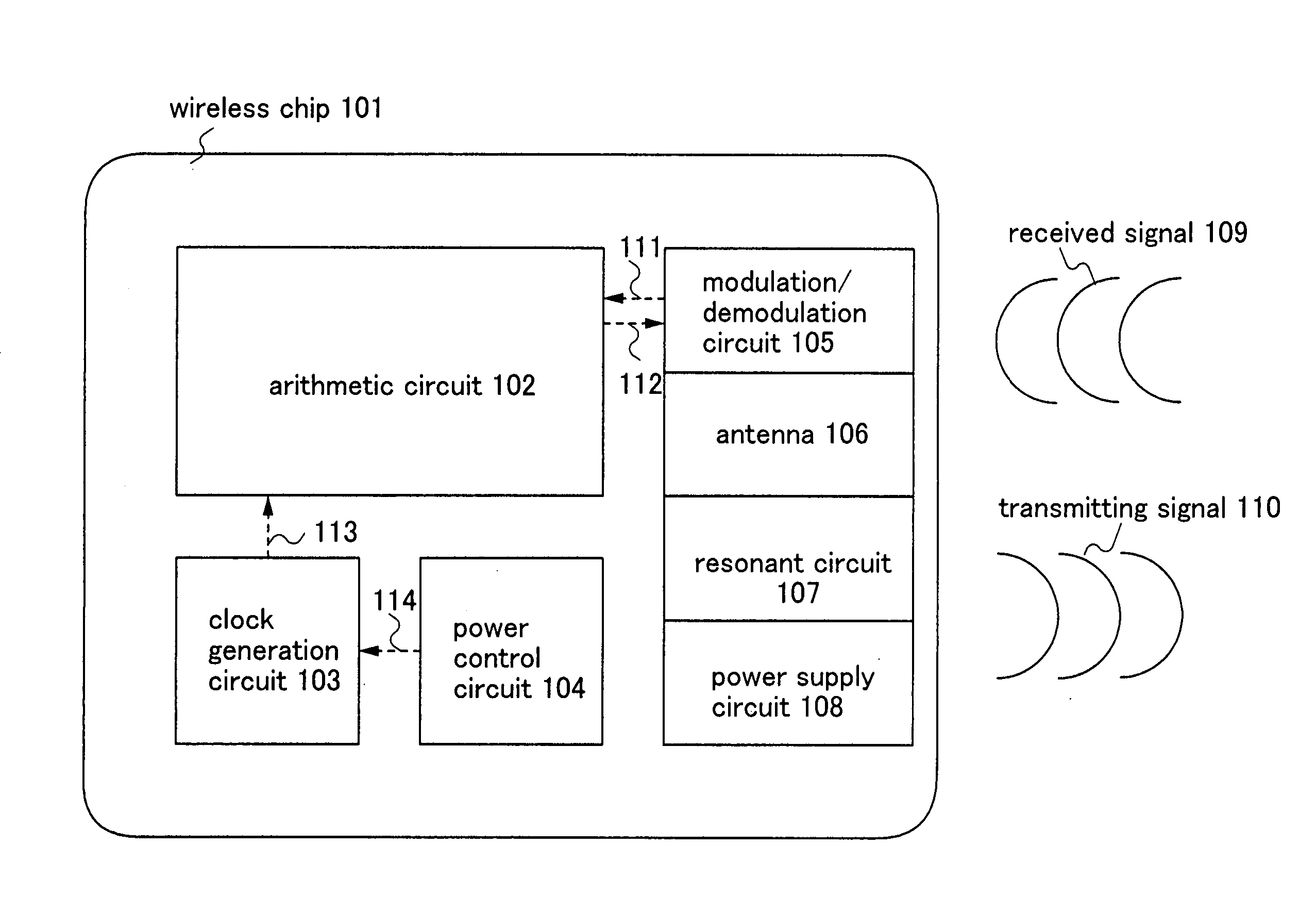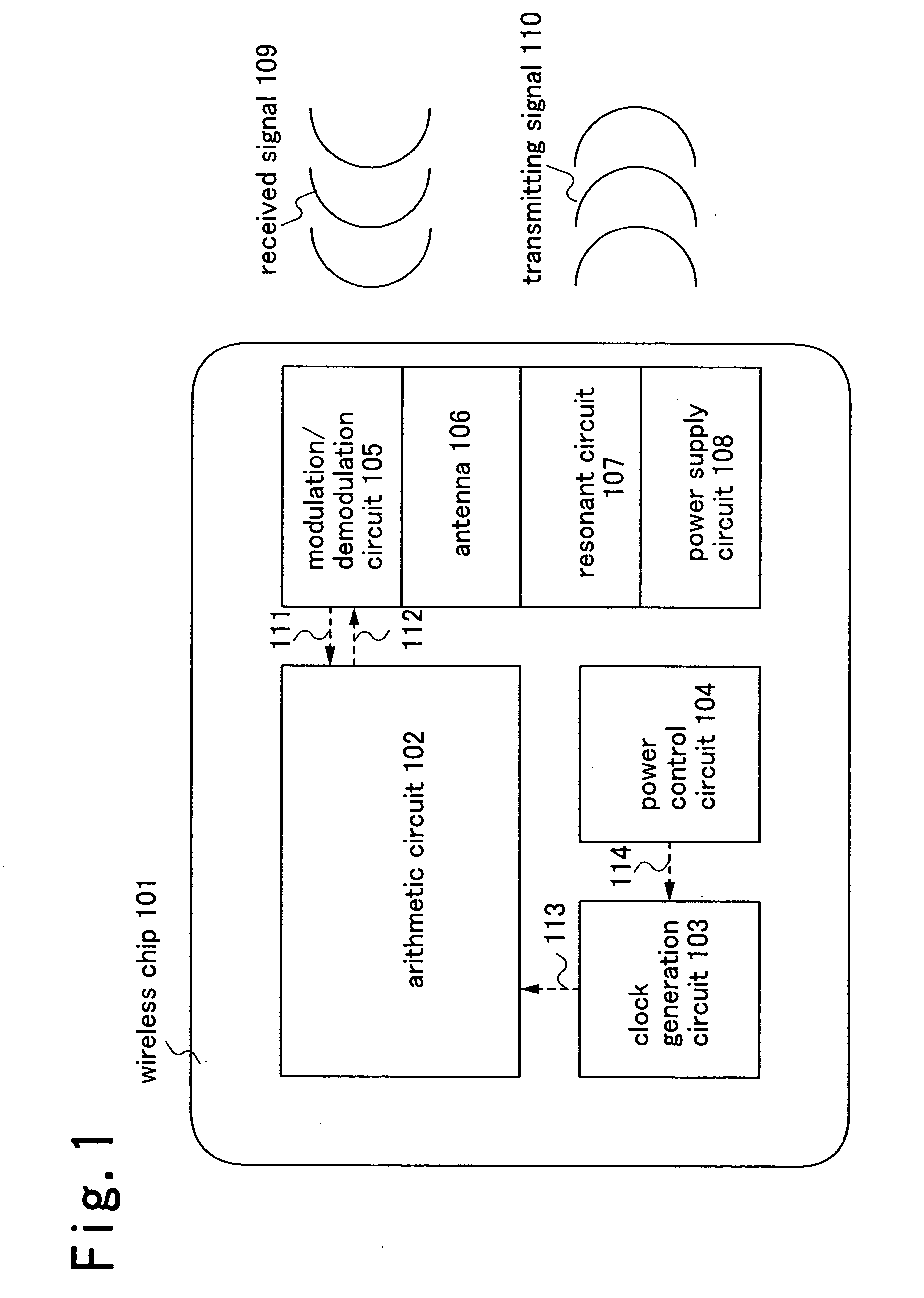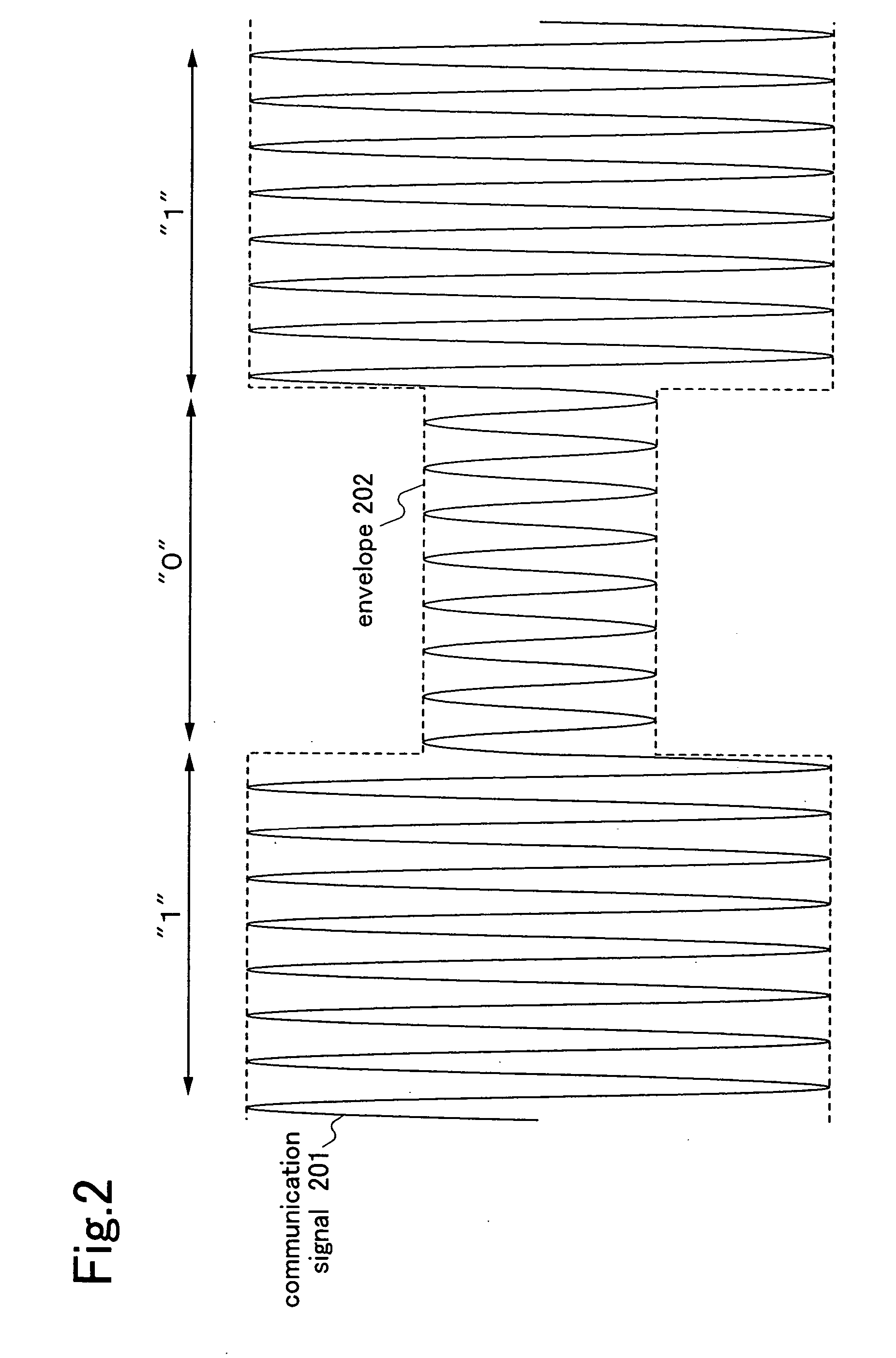Semiconductor device
a technology of semiconductor devices and semiconductors, applied in semiconductor devices, generating/distributing signals, instruments, etc., can solve the problems of unstable supply voltage or clock signals, increase in chip area, and increase in chip cost, etc., to achieve stable operation, high reliability, and high performance arithmetic circuit
- Summary
- Abstract
- Description
- Claims
- Application Information
AI Technical Summary
Benefits of technology
Problems solved by technology
Method used
Image
Examples
embodiment modes and embodiments
[0068] Embodiment modes and embodiments of the invention will be described below with reference to the drawings. Note that the invention is not limited to the following descriptions and it is easily understood by those skilled in the art that various changes may be made in modes and details without departing from the spirit and the scope of the invention. In the drawings for describing the embodiment modes embodiments, the same reference numerals are commonly given to like components, and the components will not be described repeatedly.
embodiment mode 1
[0069] As an embodiment mode of a semiconductor device of the present invention, first, FIG. 5 and FIGS. 6A and 6B show that the data racing in a synchronous circuit can be prevented by a non-overlapping clock. FIG. 5 shows a shift register as an example of a synchronous circuit included in a semiconductor device of the present invention. FIGS. 6A and 6B are timing charts of behavior of the shift register shown in FIG. 5. In FIG. 5, first to fourth latches 501 to 504 are connected in series. The first to fourth latches 501 to 504 are level sensitive latches for supplying first to fourth clock signals as gate signals respectively to first to fourth clock wirings 505 to 508. Accordingly, the first to fourth latches 501 to 504 respectively store voltage values of first to fourth data wirings 509 to 512 when the first to fourth clock signals supplied to the first to fourth clock wirings 505 to 508 are “1”, and the stored voltage values are outputted to second to fifth data wirings 510 t...
embodiment 1
[0091] In this embodiment, as an example of a power control circuit in the configuration described in the embodiment mode, a method of controlling clock signals by monitoring variation in supply voltage will be described with reference to FIG. 7 and FIG. 8. FIG. 7 shows a circuit diagram of a power control circuit in this embodiment. FIG. 8 is a flowchart showing behavior of a power control circuit in this embodiment.
[0092] First, a circuit diagram of a power control circuit of this embodiment will be described with reference to FIG. 7. In FIG. 7, an output terminal of a first regulator 701 is connected to a resistor 707, an output terminal of a second regulator 702 is connected to a resistor 709, and an output terminal of an nth regulator 703 is connected to a resistor 711. An input terminal of a first operational amplifier 719 is connected to resistors 707, 708, 713, and 714, and the output terminal is connected to the resistor 713 and a first digital buffer 722. An input termina...
PUM
 Login to View More
Login to View More Abstract
Description
Claims
Application Information
 Login to View More
Login to View More - R&D
- Intellectual Property
- Life Sciences
- Materials
- Tech Scout
- Unparalleled Data Quality
- Higher Quality Content
- 60% Fewer Hallucinations
Browse by: Latest US Patents, China's latest patents, Technical Efficacy Thesaurus, Application Domain, Technology Topic, Popular Technical Reports.
© 2025 PatSnap. All rights reserved.Legal|Privacy policy|Modern Slavery Act Transparency Statement|Sitemap|About US| Contact US: help@patsnap.com



